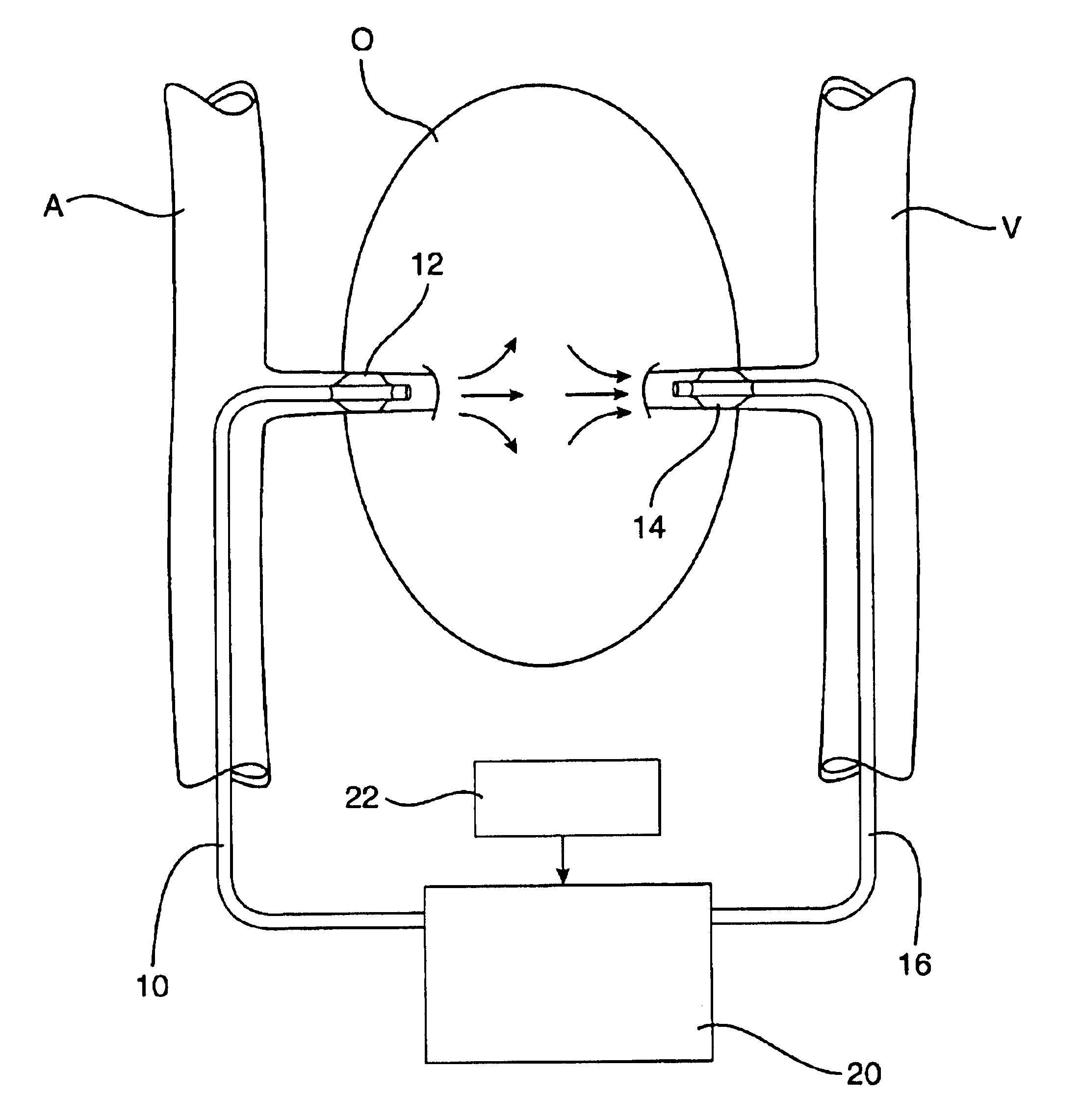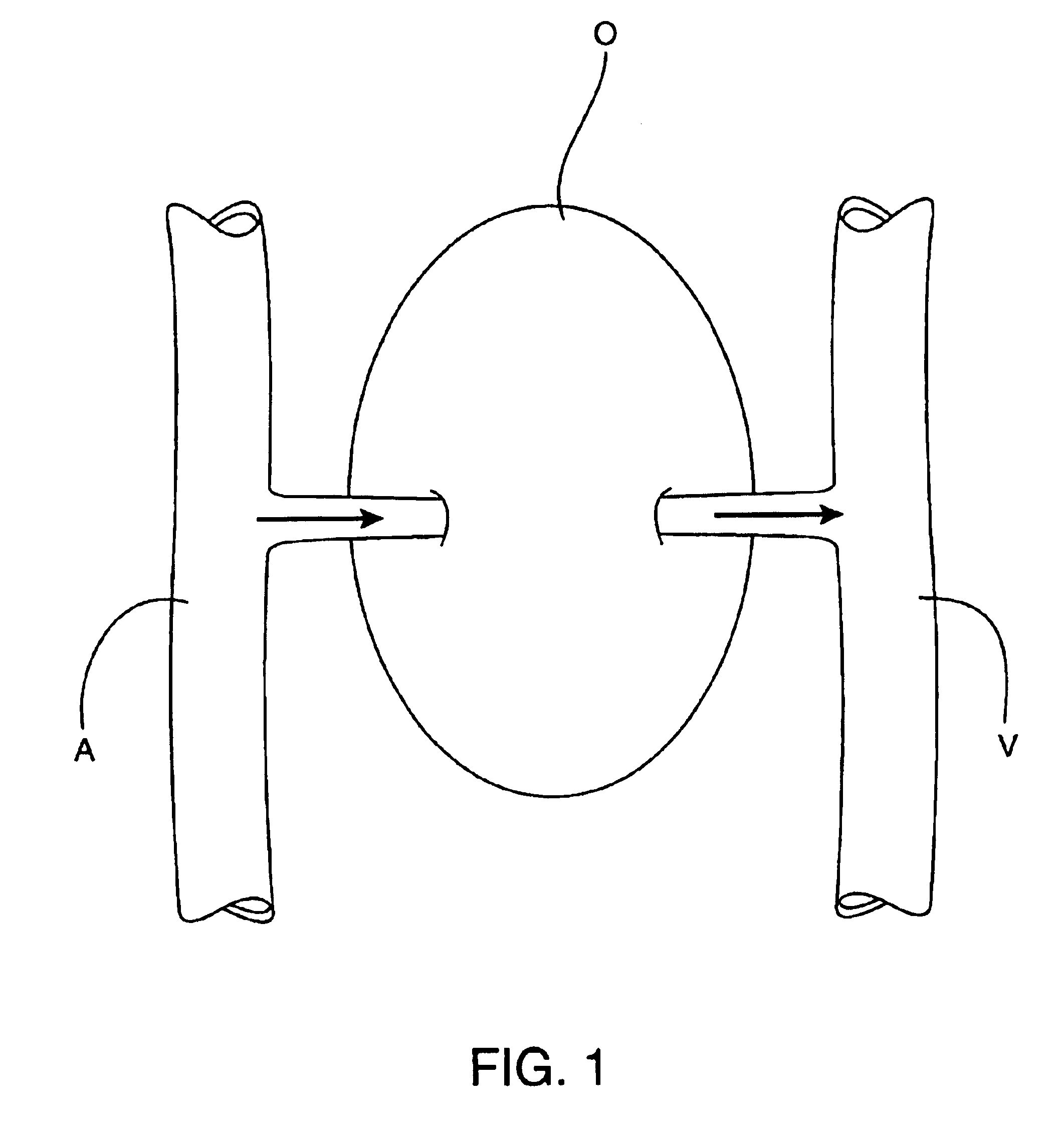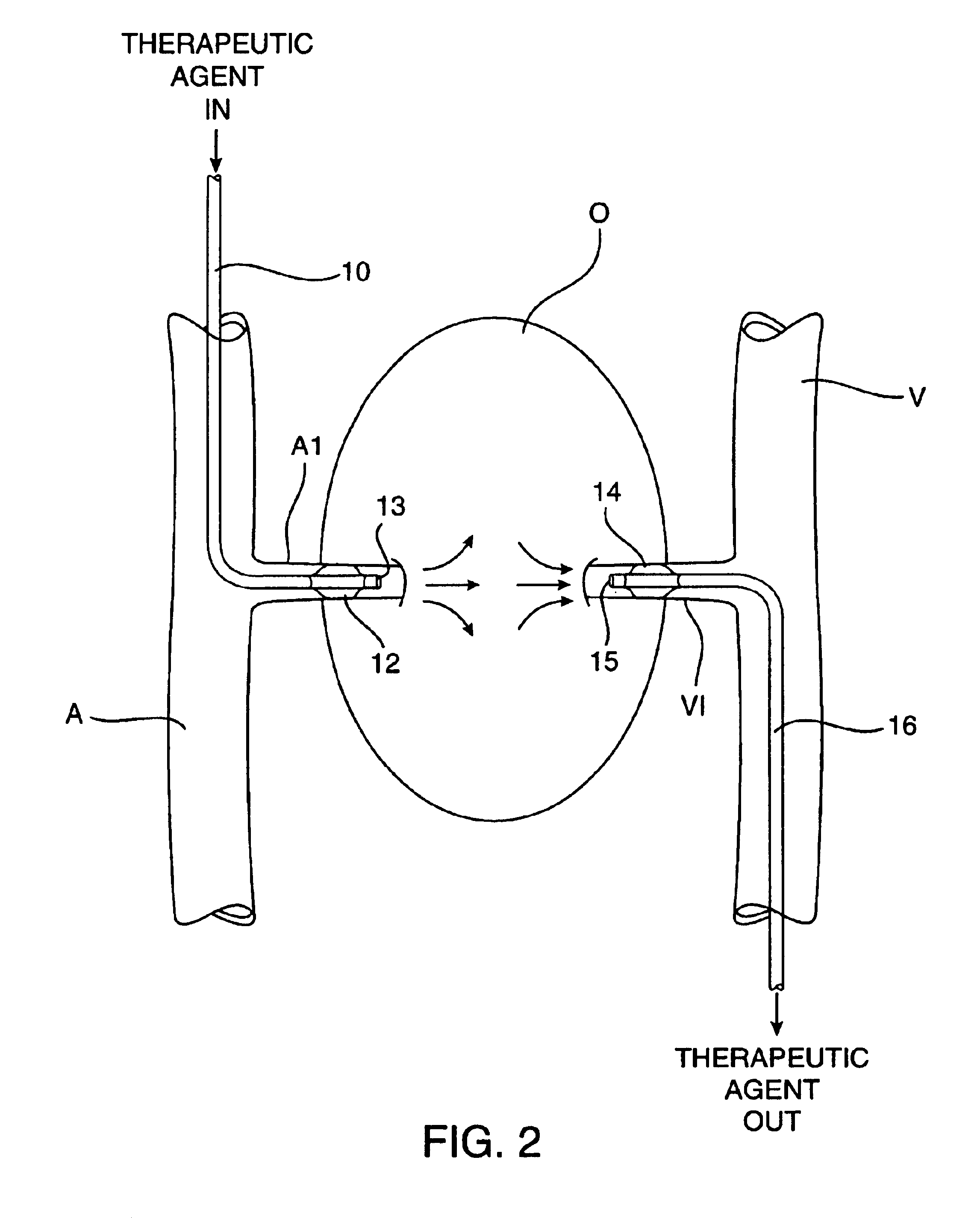Methods and apparatus for perfusion of isolated tissue structure
a tissue structure and apparatus technology, applied in the field of methods and apparatus for perfusion of isolated tissue structure, can solve the problems of systemic delivery being harmful, toxic or otherwise harmful, and achieve the effect of reducing the risk of infection, and improving the quality of li
- Summary
- Abstract
- Description
- Claims
- Application Information
AI Technical Summary
Benefits of technology
Problems solved by technology
Method used
Image
Examples
Embodiment Construction
Referring now to FIG. 1, a tissue structure in the form of an organ O which may be treated according to the methods of the present invention has an internal vasculature which receives blood from at least one blood vessel carrying oxygenated blood, typically an artery A and which passes blood to another blood vessel, typically a vein V. Thus, blood flow through the organ is generally in the direction of the arrows. It will be appreciated that this is a schematic illustration and that many organs and tissue structures will have more than one artery supplying blood and more than one vein receiving blood. In addition to the blood which is supplied to an organ to oxygenate tissue, some organs receive partially oxygenated blood from another organ or source for processing by the organ, e.g. the liver receives oxygenated blood from the gastrointestinal tract through the portal vein. For simplicity herein, however, those blood vessels which supply blood to an organ or other tissue structure ...
PUM
 Login to View More
Login to View More Abstract
Description
Claims
Application Information
 Login to View More
Login to View More - R&D
- Intellectual Property
- Life Sciences
- Materials
- Tech Scout
- Unparalleled Data Quality
- Higher Quality Content
- 60% Fewer Hallucinations
Browse by: Latest US Patents, China's latest patents, Technical Efficacy Thesaurus, Application Domain, Technology Topic, Popular Technical Reports.
© 2025 PatSnap. All rights reserved.Legal|Privacy policy|Modern Slavery Act Transparency Statement|Sitemap|About US| Contact US: help@patsnap.com



